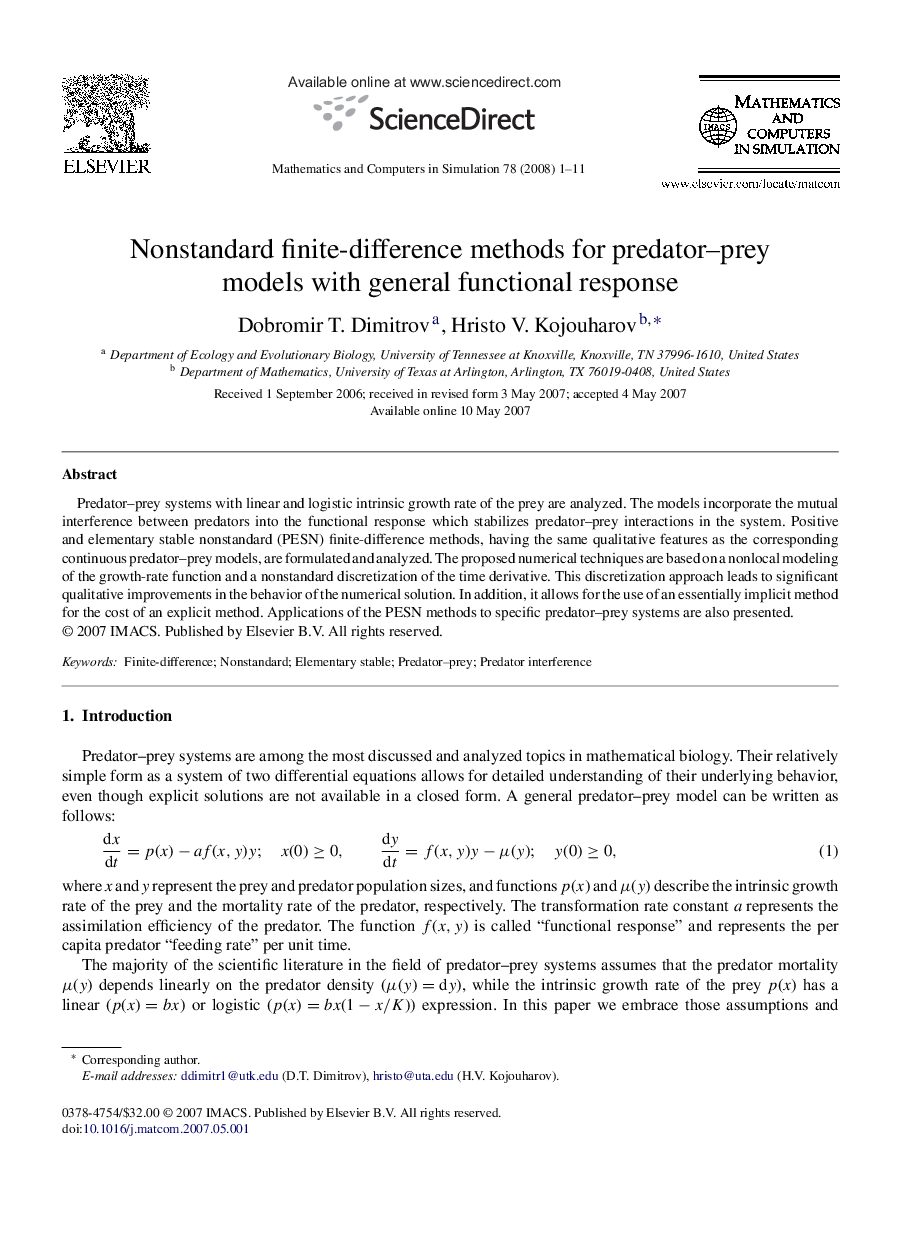| Article ID | Journal | Published Year | Pages | File Type |
|---|---|---|---|---|
| 1140722 | Mathematics and Computers in Simulation | 2008 | 11 Pages |
Predator–prey systems with linear and logistic intrinsic growth rate of the prey are analyzed. The models incorporate the mutual interference between predators into the functional response which stabilizes predator–prey interactions in the system. Positive and elementary stable nonstandard (PESN) finite-difference methods, having the same qualitative features as the corresponding continuous predator–prey models, are formulated and analyzed. The proposed numerical techniques are based on a nonlocal modeling of the growth-rate function and a nonstandard discretization of the time derivative. This discretization approach leads to significant qualitative improvements in the behavior of the numerical solution. In addition, it allows for the use of an essentially implicit method for the cost of an explicit method. Applications of the PESN methods to specific predator–prey systems are also presented.
